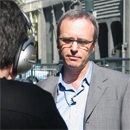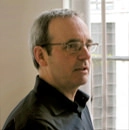

About David Clinkston
David Clinkston has had a prominent role as the design and technical lead for a range of residential, commercial, urban design, and public projects throughout the Pacific Northwest. Many are highly visible and have included extensive public outreach processes.
He refers to "the balancing act", and has proven that functional needs, budgetary considerations, and pleasing aesthetics can be combined. He rejects the notion of applying a design style or a pre-established formula. His approach is to embrace particular site constraints and contextual challenges, listen very carefully to the client, and only then respond with inspiration, and creativity.
Design is for the client and should not be a monument to the architect's ego.
Communication and relationship are key components to working with a client. Design is a very personal undertaking and the highest priority in the relationship is listening. A heightened sense of listening leads to deeper understanding of the issues that inspire the soul of a design.
Another aspect that must be heeded is the cultural tone and history of a specific place, be it ancient or new, urban or natural. Every location has its own voice, with nuances and subtleties that will help shape a design.
David has been a proponent of passive sustainable technologies since the late 1970's when greatly influenced by then-California Governor Jerry Brown's Office of Appropriate Technology (OAT). The passion to integrate sustainable components into architectural design has been a steady theme throughout his career.
While applying a firm understanding of codes and functional criteria from the outset, David has repeatedly met the technical challenges of integrating station architecture into dense existing urban infrastructure and narrow right-of-way constraints. He is skilled at making presentations to the public and explaining how designs that respond to agency criteria are also respectful of community needs and character. His function-first designs have been balanced with aesthetic solutions that have been embraced by neighborhood groups and stakeholders.
Over the years David has collaborated extensively with many talented engineers, architects, planners, landscape architects, and artists and maintains a strong network of relationships.
David moved to Seattle in 1979 to attend graduate school at the University of Washington. He began full-time architectural practice in 1982 after completion of coursework. A Master's degree was awarded in 1986 upon submission of his graduate thesis.
Master of Architecture, University of Washington 1986
Bachelor of Arts, Psychology, Sonoma State University, California 1976
Registered Architect, States of Washington and California
Current Affiliations
American Institute of Architects
Transportation Choices
Northwest EcoBuilding Guild
Futurewise
Past Affiliations
Pioneer Square Community Association - Public Spaces Committee
AIA Seattle Chapter - Urban Design Committee
Allied Arts - Urban Environment Committee